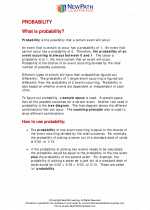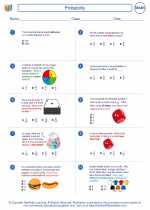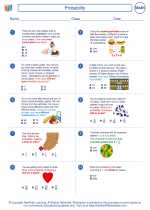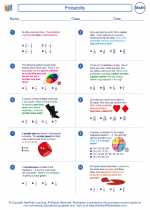Exponential Function
An exponential function is a mathematical function of the form f(x) = a * b^x, where a and b are constants and b is a positive real number not equal to 1.
Key Concepts:
- Base (b): The base of an exponential function is the constant raised to the power of x.
- Exponent (x): The exponent represents the power to which the base is raised.
- Growth and Decay: Exponential functions can model both growth (when b > 1) and decay (when 0 < b < 1).
Graphing Exponential Functions:
To graph an exponential function, you can plot points or use transformations of the basic exponential function f(x) = b^x. When b > 1, the graph increases from left to right. When 0 < b < 1, the graph decreases from left to right.
Properties of Exponential Functions:
- Domain: The domain of an exponential function is all real numbers.
- Range: The range of an exponential function depends on the value of b. When b > 1, the range is all positive real numbers. When 0 < b < 1, the range is all positive real numbers less than 1.
- Asymptote: The x-axis (y = 0) is a horizontal asymptote for the graph of an exponential function.
Common Exponential Functions:
Some common exponential functions include:
- Exponential growth: f(x) = a * b^x, where b > 1
- Exponential decay: f(x) = a * b^x, where 0 < b < 1
Real-World Applications:
Exponential functions can be used to model population growth, radioactive decay, compound interest, and more.
Study Guide:
- Understand the basic form of an exponential function: f(x) = a * b^x
- Identify the base and exponent in an exponential function
- Graph exponential functions and understand their behavior based on the value of the base
- Explore real-world applications of exponential functions
- Practice solving problems involving exponential growth and decay
Exponential functions are an important topic in mathematics and have wide-ranging applications in various fields. Understanding the properties and behaviors of exponential functions can help in analyzing and solving real-world problems.
.◂Math Worksheets and Study Guides Sixth Grade. Probability

 Worksheet/Answer key
Worksheet/Answer key
 Worksheet/Answer key
Worksheet/Answer key
 Worksheet/Answer key
Worksheet/Answer key
